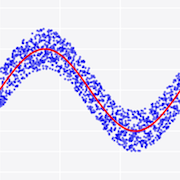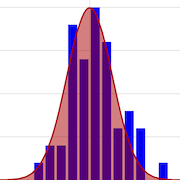WebService::Plotly - access plot.ly programmatically
version 1.133400
use WebService::Plotly;
my $user = USERNAME_HERE;
my $login = WebService::Plotly->signup( $user, EMAIL_HERE );
warn "temp password is $login->{tmp_pw}";
my $plotly = WebService::Plotly->new( un => $user, key => $login->{api_key} );
my $x0 = [ 1, 2, 3, 4 ];
my $y0 = [ 10, 15, 13, 17 ];
my $x1 = [ 2, 3, 4, 5 ];
my $y1 = [ 16, 5, 11, 9 ];
my $response = $plotly->plot( $x0, $y0, $x1, $y1 );
print "url is: $response->{url}";
print "filename on our server is: $response->{filename}";This module provides a smooth interface to the REST API of http://plot.ly. It will take both plain perl data as well as PDL objects and transform them as needed.
Note that WS::Plotly caches the filename on the plotly server inside the object, so that further plot/style/layout calls can be used to modified an existing plot.
You can find examples plots at https://plot.ly/api/perl/.
A sample of the plots available are shown below (if you don't see images below, view this documentation on MetaCPAN). To view the example code, follow the links.
WS::Plotly uses a standard Moo constructor.
Expects a string containing the username to be sent to the API for authentification.
Required attribute.
Expects a string containing the API key to be sent to the API for authentification.
Required attribute.
Expects a string containing options sent to the API with every data call, concerning usage of the filename parameter. See the bottom of https://plot.ly/api/.
Expects a string containing options sent to the API with every data call, determining the name for the plot resulting of the call, or a name of the plot to be reused for this call.
Boolean that determines whether the server message (containing the plot url and filename) will be printed to the console. Defaults to 1.
Returns the version of the API object, which will be sent to the API.
Creates a new account on the server, if possible. Returns a hash containing the temporary password of the new account, as well as the api key.
All of these calls take arguments in this fashion:
$plotly->plot( @data, %options );Beginning from the start of the argument list all elements will be slurped into a data array (they're generally expected to be array references or PDL objects) until the first scalar with a ref() value is reached.
This is assumed to be a hash key and it along with all following scalars will be slurped into an option hash.
This means that the data calls generally do not care if they are sent an array reference containing a list of data array referencess as the first argument, or a flat list of data array references.
All of the data calls return a response hash containing the keys url, message, warning, filename and error. Normally only url and filename will be interesting to you; however message can contain extra information and will be printed if verbose is set to 1, warning can contain warnings from the server and is always printed with warn(), while a value in the error key triggers the module to die.
These data calls exist and reading the documentation at the bottom of https://plot.ly/api/ is recommended.
This sends data to Plotly to be plotted and stored.
This call is used to style the data sets sent to the server with the plot call.
This call customizes the style of the layout, the axes, and the legend.
Many thanks for Christopher Parmer specifically and Plotly, Inc. in general for providing much support and help in creating this module, as well as footing the bill for it.
Please report any bugs or feature requests through the issue tracker at https://github.com/plotly/Perl-API/issues. You will be notified automatically of any progress on your issue.
This is open source software. The code repository is available for public review and contribution under the terms of the license.
https://github.com/plotly/Perl-API
git clone https://github.com/plotly/Perl-API.gitChristian Walde <[email protected]>
Christopher Parmer <[email protected]>
This software is Copyright (c) 2013 by Plotly, Inc..
This is free software, licensed under:
The MIT (X11) License


